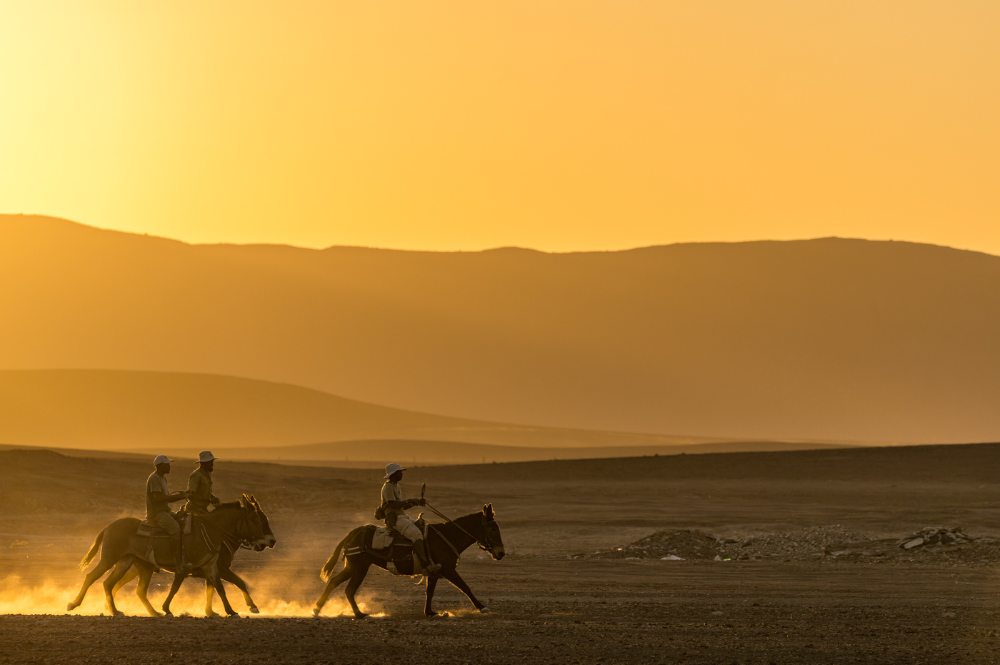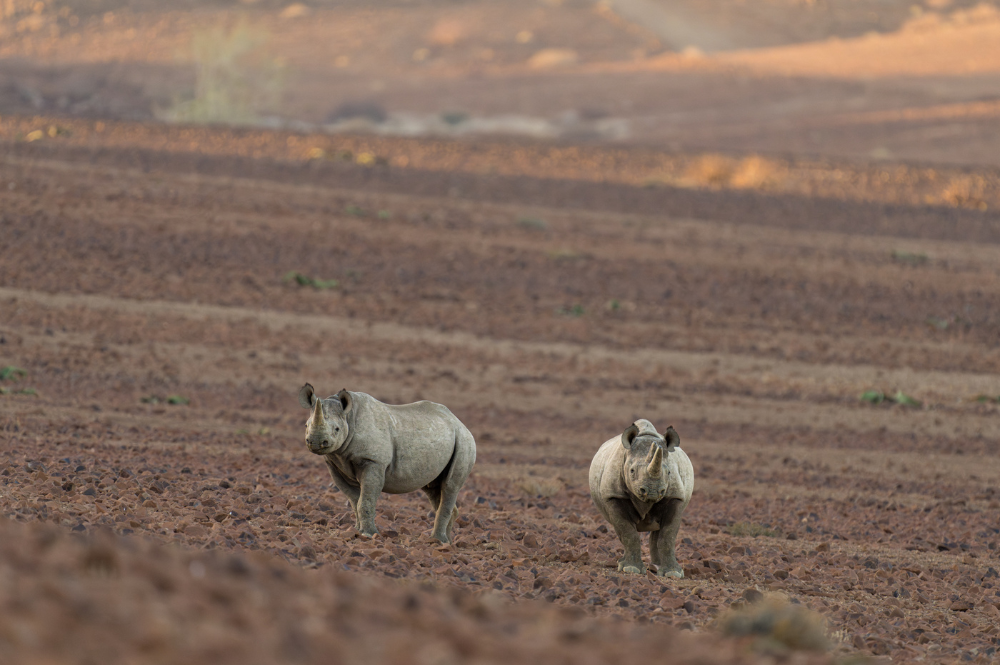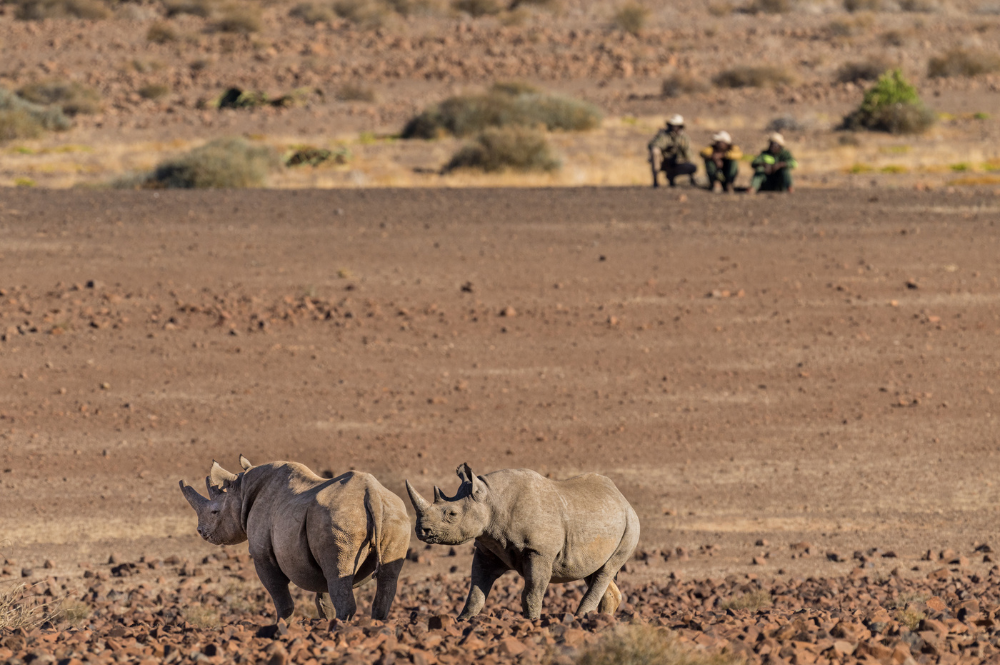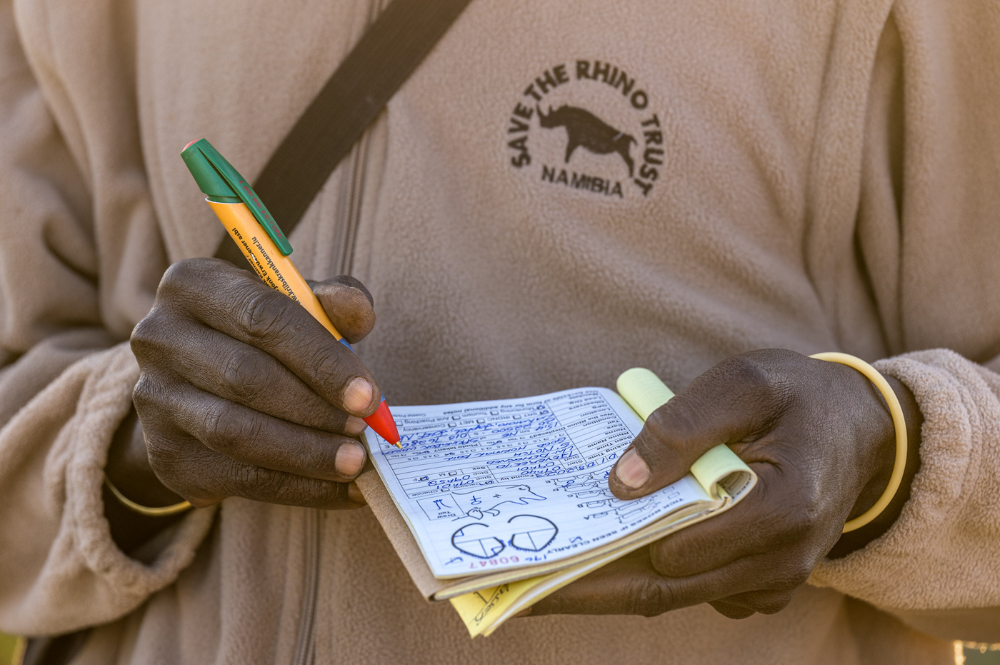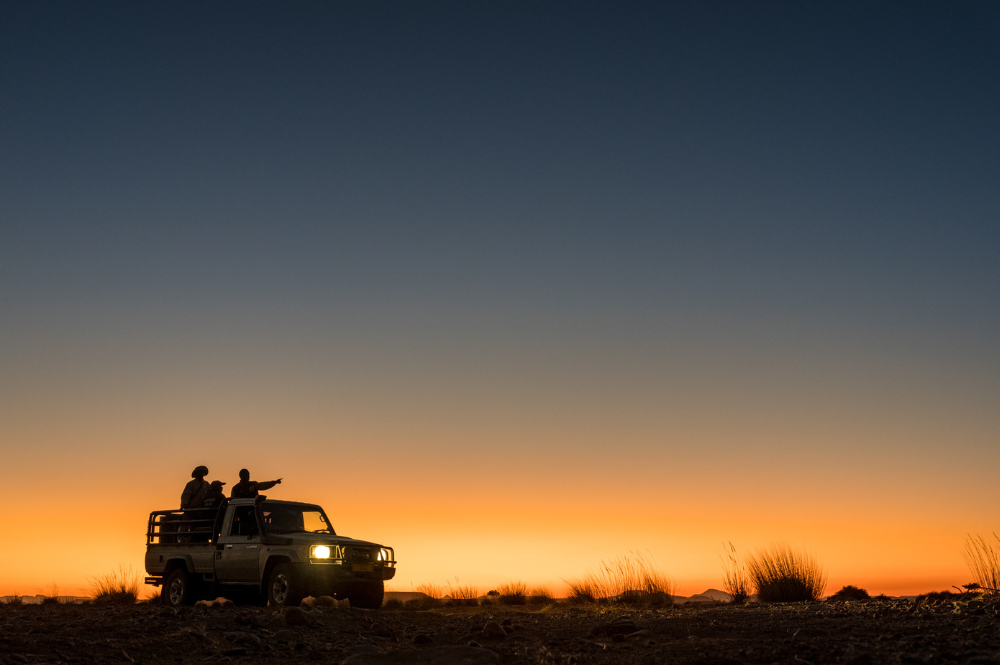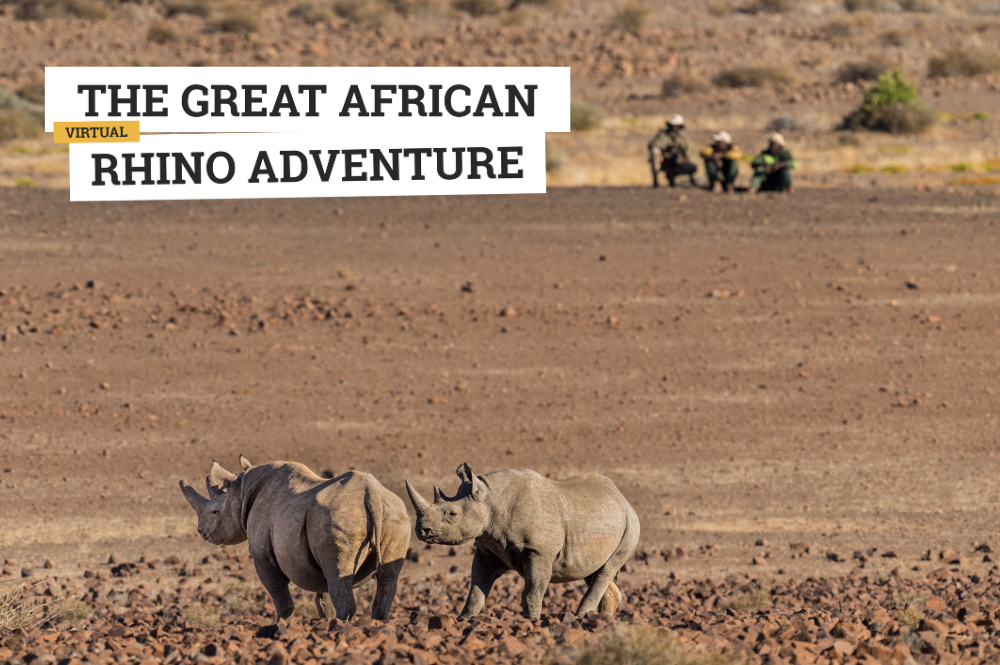

Credit: Marcus Westberg
On the trail of Namibia’s desert black rhinos
Depicted in ancient rock art by bushmen long gone, black rhinos have been an integral part of northwest Namibia’s arid heartlands for millennia. Scattered across its rocky escarpments, browsing its toxic Euphorbia damarana (a native plant, also known as ‘Damara milk-bush’) and travelling great distances searching for scant water, they are the perfect desert survivor.
Emerging amidst the poaching heights in 1982, when barely 50 rhinos survived here, Save the Rhino Trust (SRT) was founded by Blythe Loutit, an artist, author and conservationist passionate about these rhinos, and Ina Britz, another woman devastated by the poaching crisis in Namibia. Using Blythe’s own finances and Land Rover, SRT’s first rhino monitoring patrols began.
More than four decades later, rhino monitoring has remained fundamental to the recovery of rhino populations here, with the Kunene Region now boasting the only Key 1 population (>100 individuals) in Africa that’s not within a formally protected area.
The Patrol Units (each comprising two SRT trackers and a Namibian Police officer) are deployed for weeks at a time and supported by Rhino Rangers – expert rhino trackers employed by communal conservancies in the Kunene. The trackers provide their unmatched knowledge about rhinos and the desert in which they roam, able to follow trails with subtle, but distinctive, clues: a bent blade of grass, a dislodged stone or perhaps a scrape in the dirt.
Whilst not an anti-poaching unit as such, the presence of these units certainly acts as a deterrent to prospective poachers. In fact, poaching incidents in the Kunene have become few and far between, despite the threat remaining persistent.
This habitat’s sheer remoteness is another contributing factor, as are the engaged and supportive communities who live here. Community is at the heart of SRT’s work, and many have – rightly – benefited from the revenue and employment generated through rhino-based tourism.
Save the Rhino International has supported SRT’s work since our own formation in 1994. Most recently, we have been able to support rations, salaries, fuel, a new vehicle, a mule patrol unit and repairs to boreholes and natural springs, ensuring sufficient water for rhinos and other species.
Thanks to your donations and fundraising through the Great African Rhino Adventure, we can keep supporting SRT and other partners.
Our next stop is the largest national park in Namibia: Etosha National Park – see you there!



